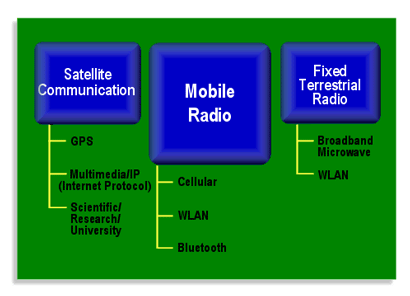|

Industry Snapshot
The Wireless Connection site provides an overview of the wireless communications industry. A brief synopsis of most of the defined, and emerging wireless standards like UMTS, CDMA-2000, etc are included. The advantages of using Xilinx FPGAs (Field Programmable Gate Arrays) in this industry are explained and solutions are provided in the form of application notes, reference designs, or cores.

Since its initial market debut in 1980, the cellular mobile telecommunications market has experienced explosive growth in consumer acceptance. The first generation wireless systems were analog cellular with standards like AMPS, ETACS, NMT, C-NET, etc. These systems primarily carried voice data, with slow digital data rates. The second-generation systems migrated towards digital cellular with standards like GSM, PDC, DAMPS, CDMA, etc. The second-generation systems also included cordless phones (DECT, PHS, etc), and satellite communications (Iridium, Globalstar, etc). Today the mobile systems of the world are mostly digital leading to the development
of global third-generation standards like IMT-2000 / UMTS. In the International Telecommunications Union (ITU), third-generation networks are called IMT-2000, and in Europe they are referred to as UMTS.
In this first year of the new millennium, there is tremendous excitement about the development of 3G (third-generation) digital wireless telecommunication systems. Two major forces are driving the development of these 3G systems. The first is the demand for higher data rate services, such as high-speed wireless Internet access. The second requirement is the more efficient use of the available radio frequency (RF) spectrum. This second requirement is a consequence of the projected growth in worldwide usage of wireless services. W-CDMA is the emerging wireless multiple access scheme for IMT-2000 / UMTS.
To complete the picture, WLAN technologies such as Bluetooth or IEEE 802.11 are poised to offer interfaces between wired and wireless networks. These standards also can serve to link multiple independant devices together over a wireless network. In the future cellular, WLAN, and wired networks will merge to provide users with a seamless radio network between home, office, and mobile handsets.
|


